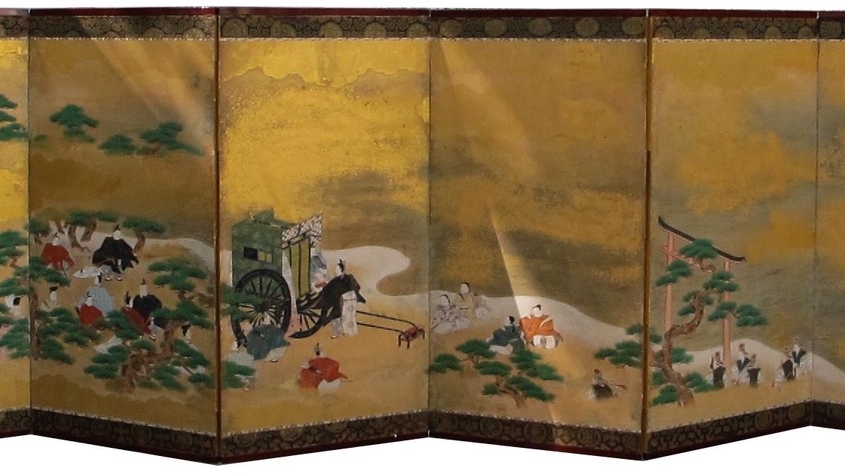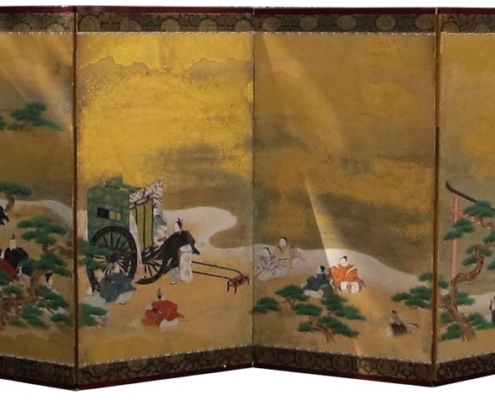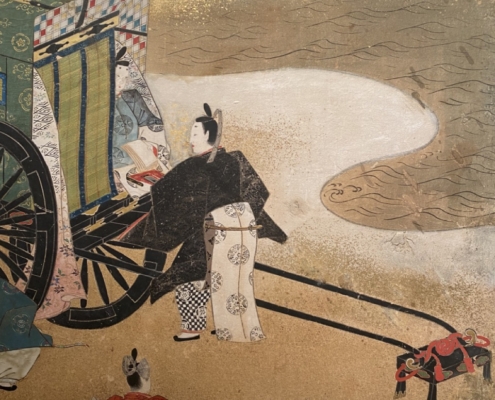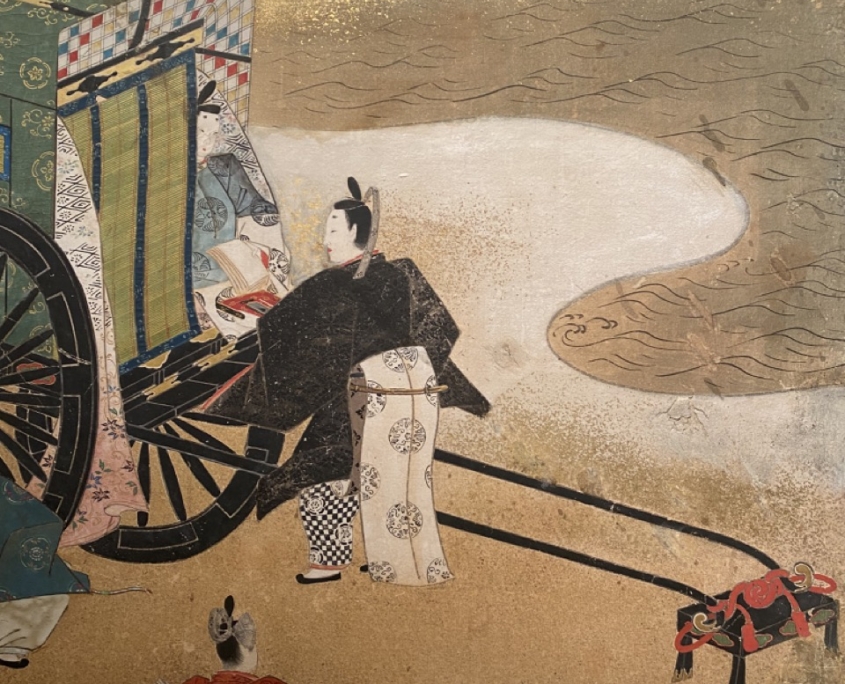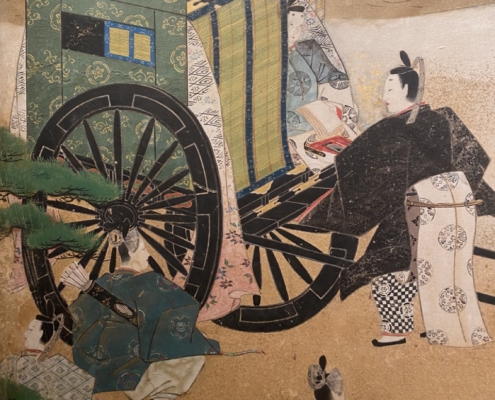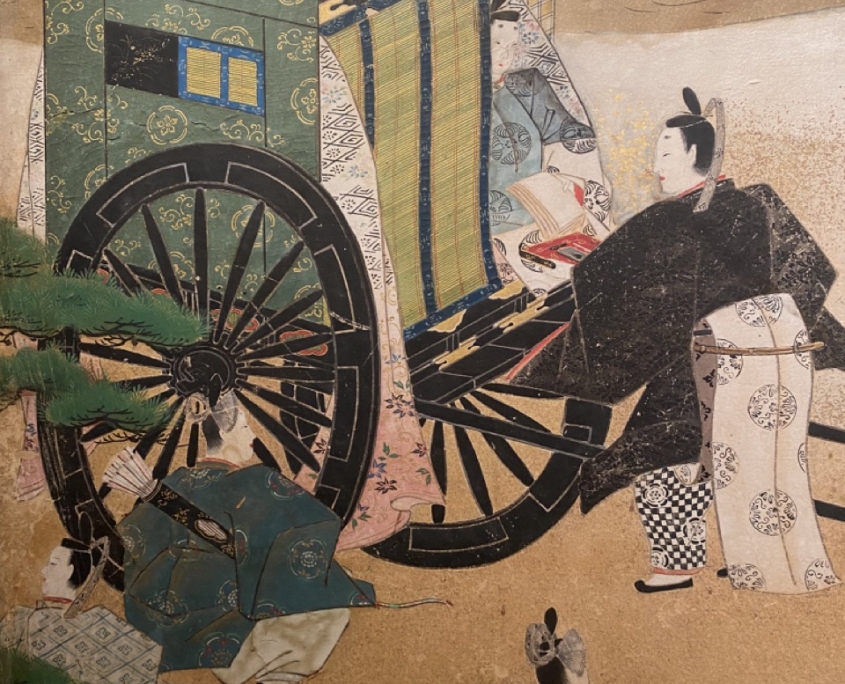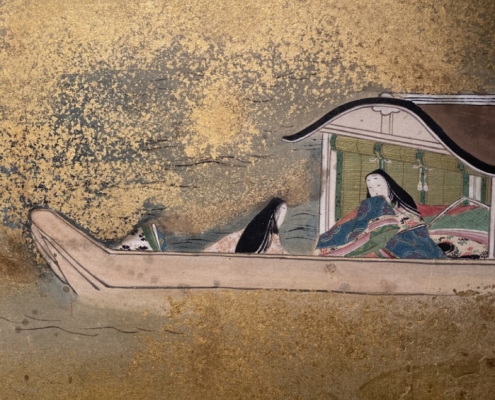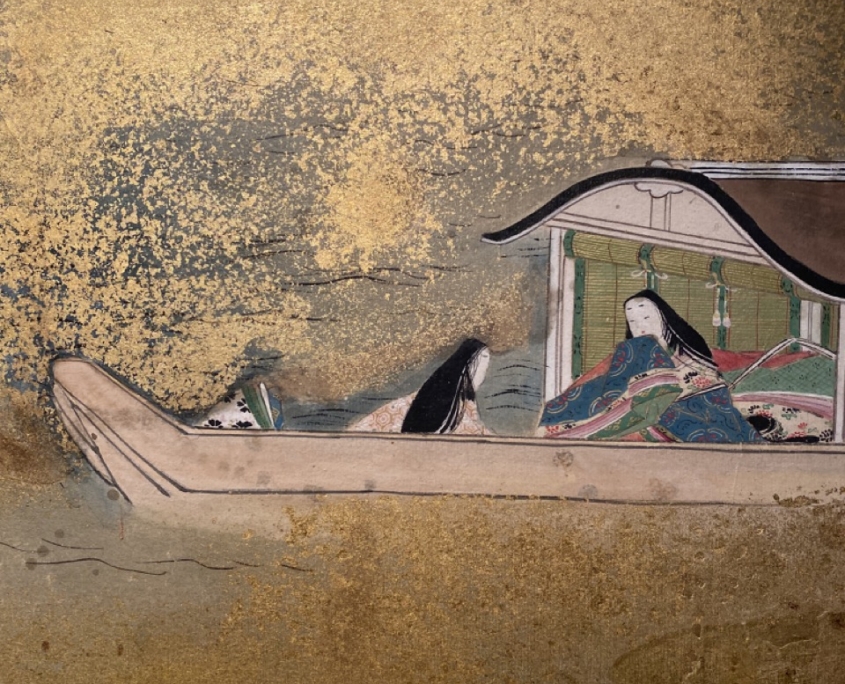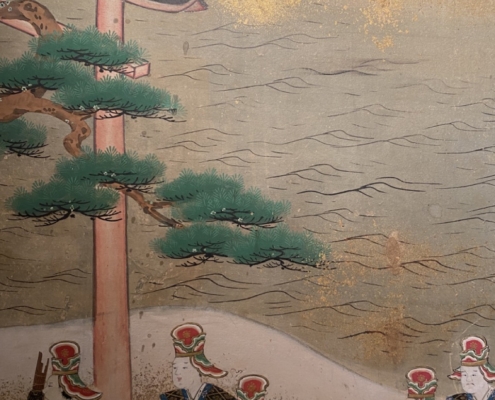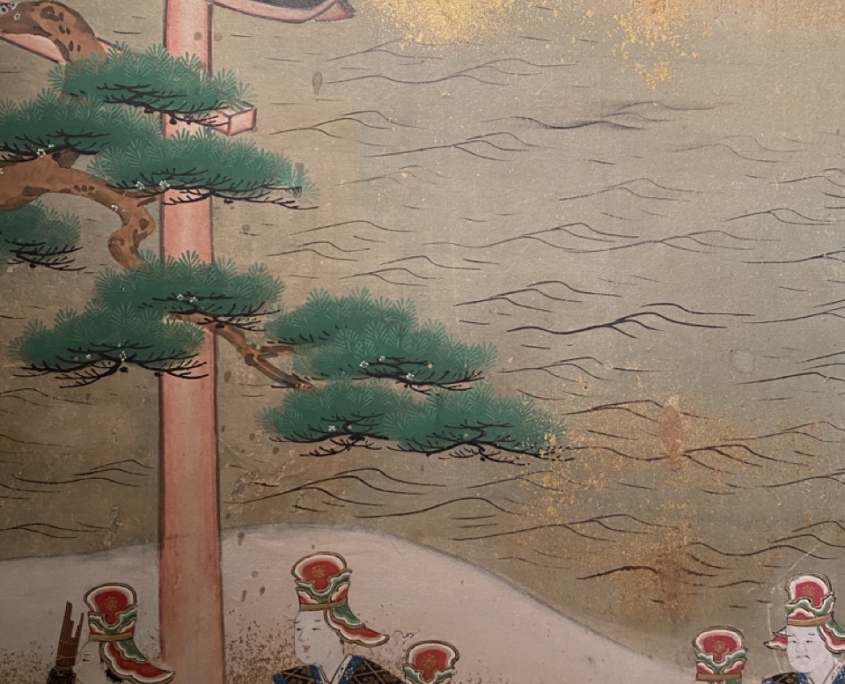In autumn, Genji went on a pilgrimage to Sumiyoshi (nowadays in Osaka). The site was marked by the torii, a gate separating the sacred enclosure from the profane environment. The procession of dignitaries and court officials moved from right to left in the direction of the Sumiyoshi shrine, recognizable by the pine trees surrounding the building and the seaside torii. They accompanied Prince Genji, who is in the carriage at the center of the screen, carrying a writing case (suzuribako).
Genji had come on pilgrimage following his two-year exile after a series of love affairs. A kind of punishment, this episode is a moment of trial typical of Japanese literature. He went to the shrine to thank the gods, a moment that marked the beginning of his glory.
In the boat, isolated on the right panel beyond the clouds, is Lady Akashi, daughter of the eponymous cleric. She was one of Genji’s concubines and the recent mother of a child from their relationship. While she used to go there annually and happened to be there at the same time as the Prince Genji. Marked by a social difference between them, she didn’t dare go to meet him.
Scenes illustrating The Tale of Genji are very popular and are called Genji-e (images of Genji). A very similar screen painted in 1669 by Kanô Tan’yû is on display at Tokyo’s Idemitsu museum.
Signed Kanô Sokuyo (狩野即誉, fl.1716 – fl. 1736) : Kanô Sokuyo hitsu with a seal.
Mid-Edo period painter of the Kanô school, second son of Kanô Yûeki (狩野友益). He served the Matsudaira clan in Kaga-Kanazawa until the middle of the Kyoho period (1716-1736). Then, he founded an independent workshop by establishing his own branch, Shiba Atagoshita Kanô (芝愛宕下狩野) as an omote eshi, official external painter of the shogunate.
He is a member of the Kanô school, one of the most famous Japanese schools of painting. This was established in the late Muromachi period, i.e. around the middle of the 15th century by Kanô Masanobu (狩野正信, 1434? – 1530?). The artists of this family workshop combined Muromachi period and Chinese-derived ink painting techniques with decorative and traditional Japanese elements. In the Edo period (1603-1868), they were the official painters of the Tokugawa shogunate.
The Itabashi Museum of Art holds a screen by the artist : Kanô Sokuyo, Pilgrimage to Kan’eji Temple (寛永寺参詣図屏風 狩野即誉 江戸時代), Edo period. Six-panels screen, colours and gold on paper, 112.2 cm x 322.4 cm.
Same in the Philbrook Museum of Art (Tusla, Oklahoma) : Kano Sokuyo, Pair of two-panel screen. Watercolor, gold leaf, paper, wood, metal.




